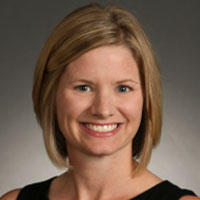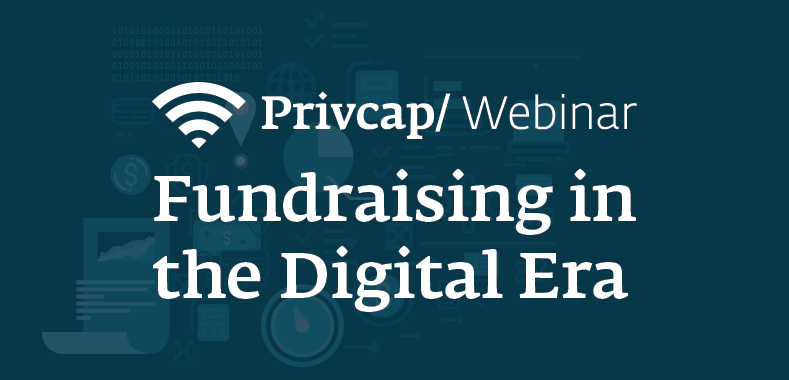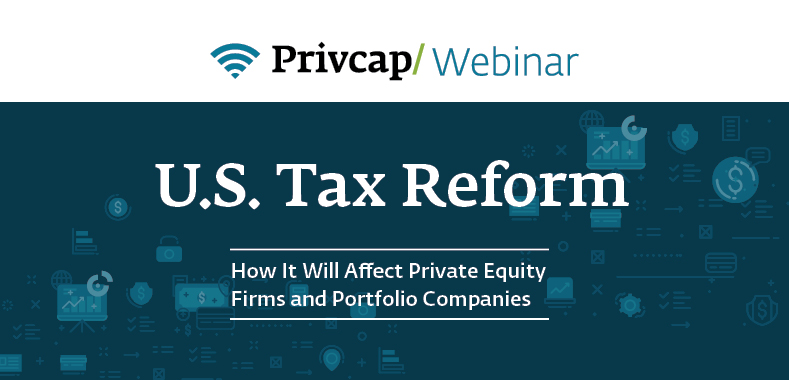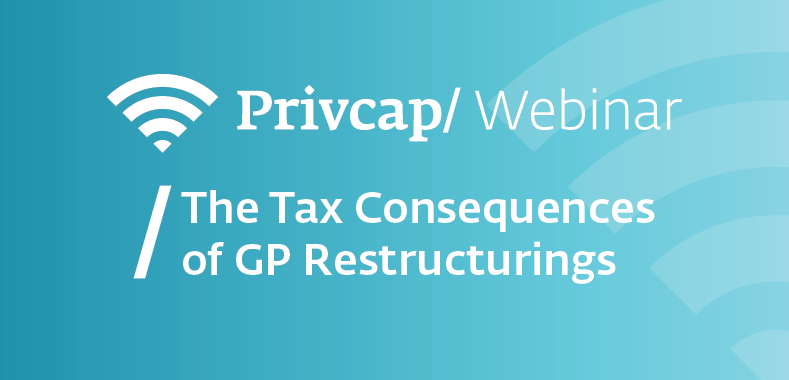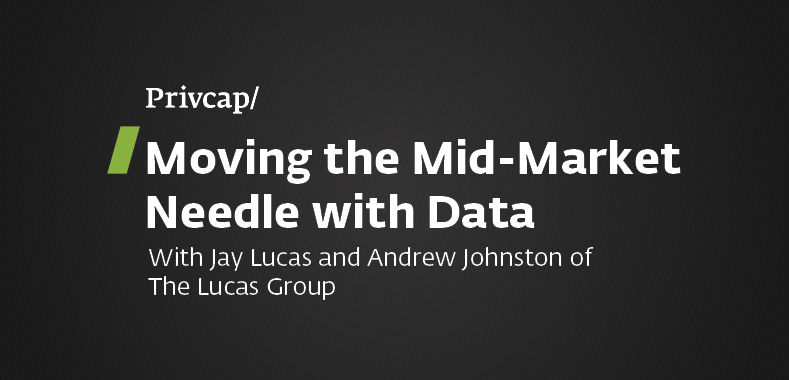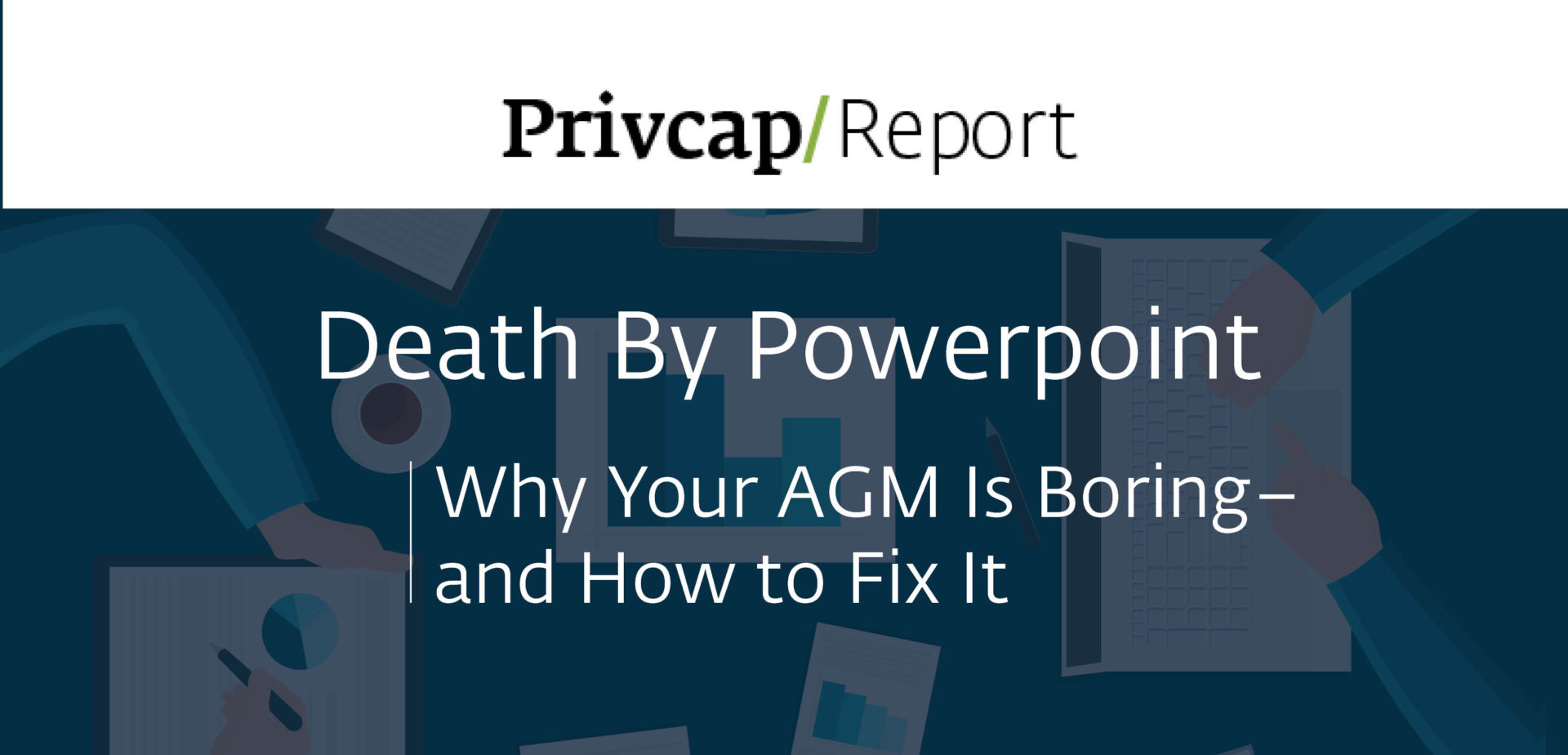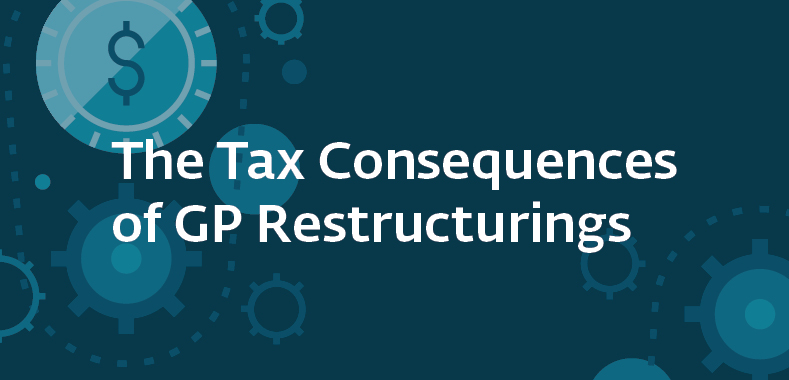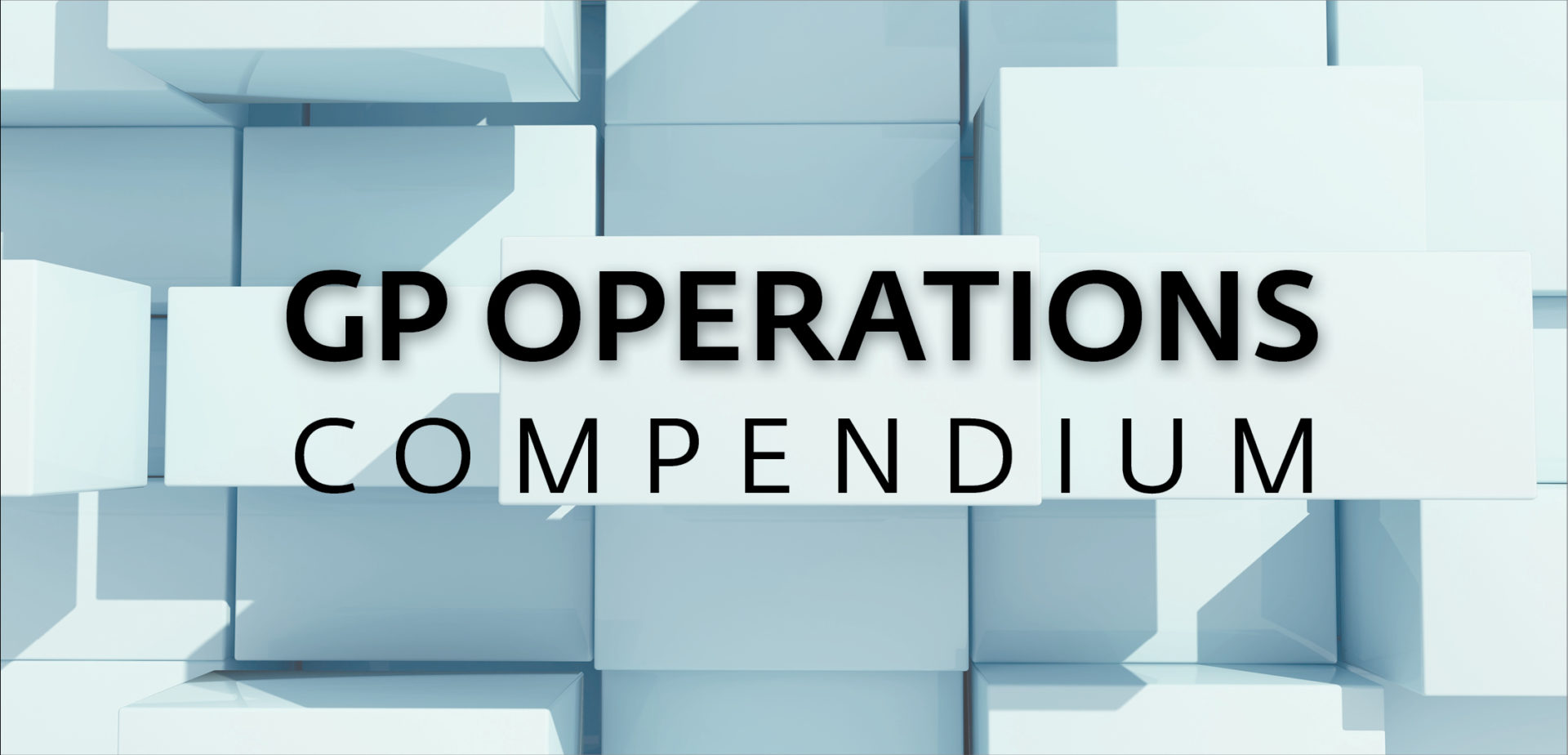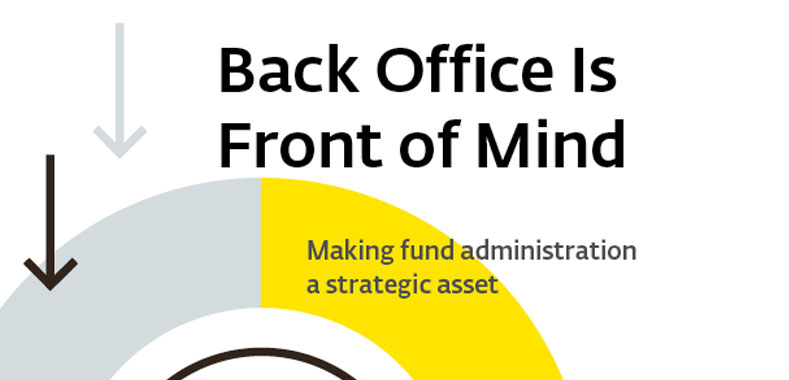On-Demand Webinar: How Boring is Your AGM?
In this 45 minute webinar discussion, IR experts share tips on planning an effective and riveting annual general meeting.
Transcript Download Transcript
On-Demand Webinar: How Boring Is Your AGM?
David Snow, Privcap:
Hello and welcome to a Privcap webinar. My name is David Snow; I’m CEO and co-founder of Privcap. Today, we’ve got a great topic for you. It is all about your annual general meeting and how to make sure it is effective and interesting, not otherwise. Let me introduce the two experts we have today to share their insights into how to create a great AGM. We’ll start with Andrea Auerbach from Cambridge Associates. Andrea, would you mind briefly introducing yourself?
Andrea Auerbach, Cambridge Associates:
Sure. I’m a managing director at the firm and I lead our fund investment co-investment in secondary practices. The team is 50 globally and we attend over 600 meetings—annual general meetings—a year. I’m looking forward to the conversation today.
Snow: 600—oh, my goodness. Now, I’d like to ask Rebecca Converse from Sutton Hill to briefly introduce herself.
Rebecca Converse, Sutton Hill:
Sure. Thanks, David, I’m glad to be here today discussing one of my favorite topics. I am a managing director with Sutton Hill and I provide a variety of investor relations consulting services for GPs, including helping them plan and execute annual meetings.
Snow: Great. The reason we thought this would be an interesting topic is because we at Privcap—in talking to general partners, we always get the sense that they are insecure about their AGM and they’re always wondering how they can improve it. We thought, “Why not ask a couple of experts who have been through many, many annual AGMs what works and what doesn’t work?”
Before we get into the details, I’d like to ask each of you—without naming names or shaming people—to describe an AGM you’ve been to that was really good, then to describe an AGM you’ve been to that was really bad. Then, we can use that as a launching point for this webinar. Andrea, with you and your team going to 600 a year, can you first give us an example of a great AGM that you’ve attended?
Auerbach: Well, given that we do attend so many every year and over a long period of time, I think I’ve personally attended over 500 in my career at CA. This is a bit of a police sketch grade AGM, OK? It’s sort of a compilation of greatest hits. I would say a very good AGM would have an atmosphere of communication and partnership with LPs, treating LPs like they’re old friends that you haven’t seen in a while and you really want to share a lot of information with them. CEOs and management teams would be present and available, either presenting or simply mingling with the LPs and being available with plenty of breaks for approaching various members of the team.
All of this interaction and demonstration of culture and alignment would be backstopped with detail provided in the annual meeting material. It’s focused, there are no side events or distractions, it’s just, “We’re in the room to get caught up, it’s been a while, how have you been?” That would be a good AGM—some of the components that I’d say my colleagues and I have enjoyed.
In terms of a bad AGM—again, this is a bit of a police–sketch compilation of epic fails that I think have affected my colleagues and myself as we sit in these rooms every year. There are two versions. One would be—again, think about it from a police-sketch standpoint—a boondoggle AGM by a potentially median maybe fund manager who proceeds to be inappropriately self-congratulatory, while at the same time being in denial about the challenges in their organization or portfolio. That’s accompanied by low to no materials, no CEOs and very controlled remarks.
The second version would simply be a “Stepford” annual meeting—an overly scripted or canned presentation that is light on detail and [just says] everything is great. Everything is great. There are two different flavors of the bad AGM and they’re out there to be experienced.
Snow: It sounds like, Andrea, the attempts to bribe you with a boondoggle have failed.
Auerbach: When you’re attending that many annual meetings in a year, you want to get in, get exactly the information you need, look people in the eye, make those connections, get the direct story and keep moving, right? This is not the only annual meeting most of your LPs are attending. It’s probably one of, I don’t know, a dozen or maybe 30. Focusing on what your LPs really need from you and giving it to them is a high–value activity, in my view.
Snow: Right, so hiring Jay Leno to tell jokes does not move the needle for you.
Auerbach: Not so much.
Snow: Rebecca, let’s hear your versions of, on the one hand, great AGMs you’ve been to and, on the other hand, painful AGMs you’ve been to.
Converse: Sure. Most of the AGMs that I am going to, I’m mostly helping with, so I’m hoping that none of them are entirely painful. I recently went to an annual meeting and it was a group of about 30 between the fund staff, the CEOs and the investors who attended. It was very conversational, so the CEO had very natural presentations, the investors were asking a lot of questions, the manager was providing input in places where it made sense for them and it just was a great feel that really felt more like a conversation and less like the manager talking at the investors for a few hours nonstop. That would be a great one.
For the others, I would say these are what I would call maybe the GP faux pas that I think make everybody uncomfortable in the room. One of them is throwing anybody else on your team under the bus for something that you see on the slide that might be a mistake and you didn’t notice before. Maybe calling out an associate or a VP, or whoever that was. “Oh, so-and-so, this number is wrong.” That is very uncomfortable and I’ve seen that happen before.
Then, the other is just folks who go on and on and on with no sense of time. Everyone in the audience is clearly done with hearing about that company and they are 2x over time and everyone’s trying to give them the signals. I would say those are the two very uncomfortable things for GPs.
Snow: Great, thank you. Let’s dig a bit deeper into the elements of success and failure. Andrea, you mentioned information about the portfolio companies. Is that primarily what LPs want when they attend an annual meeting? What do LPs want to learn?
Auerbach: LPs probably have a range of information needs depending on their level of commitment to that particular manager and across funds or within the same fund, but yes. If you think about it, there are quarterly letters that are provided that also vary greatly in level of detail. The annual meeting is really the one chance to get the comprehensive vitamin shot of “Here’s the current standing of the portfolio companies.” When we’re sitting in an annual meeting, we really are looking for that granular financial performance and operating information and updates, so that we can track those companies from year to year. That’s of great value and it doesn’t have to be something that’s verbally provided. If you provide all that detail in the annual meeting materials, then it’s not something you have to reside just reading off the page, which is something I think Rebecca and I both find not particularly helpful.
Provide the detail on where the company is performing and let us absorb that, then give us highlights. What were the challenges the company encountered in the year? What were some of the successes? Let’s keep going with that. That level of information is quite valuable to an LP, from my perspective.
Snow: Yep. Rebecca, it sounds like what’s happening is that, “Look, we’re all in the room with each other, we’re all humans. Can you deliver information to me about the portfolio in more of a conversational way than just reading it off a page and throwing out statistics that can be delivered in a more efficient format?”
Converse: Yes. I think one of the tools that GPs can deploy to have that atmosphere, as Andrea mentioned, is having a good base of materials. One way to think about that is making sure you’re providing consistent information for every company that’s out there. Regardless of how the company is doing, regardless of its focus, there’s always key financial information regarding the company’s performance, then the structure of your investment, the debt. Those types of common things where, if the investors know they have that information there for every company and you’re covering some of the basics in the materials, it really frees them and the presenter up to be a bit more free and engaging with really talking about the company from a more natural perspective instead of just trying to ram through a bunch of slides or relay a bunch of key statistics.
Auerbach: Yes. The other thing I would say is for those GPs that are concerned about providing that level of detail, keep in mind that LPs have a confidentiality with the GP and LPs typically have information rights as part of the LPA that everyone signed up to at the beginning of that fund. The most successful annual meetings I’ve seen are where the GPs really rely on that confidentiality, acknowledge the information right and just give the LPs what they want. Then, as Rebecca said, use the meeting to move provide some more of the color around the numbers and bring you in. This is a 12–year relationship that we are in when we’re in those annual meetings. We’re going to be there next year, so just tell us what’s going on and we’ll come back a year from now and get caught up again.
GPs that really embed that in their thinking, and how they structure and communicate in an annual meeting, have greater success.
Snow: I have a follow-up question, but first, I want to tell the audience that you can send in questions for our experts in the webinar platform. We’ve already got a few good questions rolling in and we will definitely save some time near the end of this to answer the best questions. Andrea, you mentioned earlier the importance of having access to CEOs. What’s the best kind of presentation of a CEO at an AGM? And what’s a less–effective format?
Auerbach: I personally really look forward to CEO presentations—in live presentations, I should say—because, of all the individuals that may be presenting at an annual meeting, I would argue [that] a CEO is most likely to go a little off script, which is really what you’re in the room for. For the color, as Rebecca described, and who knows better what’s happening at their company than a CEO?
The challenge of the CEO presenting, though, is that it is hard to control their presentation and manage their time. I’ve always appreciated having access to CEOs, listening to CEOs present. A colleague of mine also said there’s a new strain of access in information and I was at an annual meeting earlier this month where all the CEOs were present—you could sit with them during a meal and really go in depth with them about their company. That’s another way to hear the best from a CEO in terms of their thinking in a small group setting, and/or GPs that have breakout rooms where you can go in—a bunch of LPs can go in and really talk to the management teams of various companies.
All three of those flavors: CEOs presenting in the annual meeting itself, interacting with CEOs in various breaks, and/or having very specific breakout sessions to have a chance to really ask questions of the CEO directly in a non-time constrained way. Now, I say all of that.
The other version of the CEO presentation is often in the form of a video, which can be more like a commercial for the firm. I will admit [that] this is a concession, so if anyone has me in their annual meeting, you’re going to watch my head drop to my device to check my email when the video starts rolling, mostly because those are clearly—we know they’re edited. They might be scripted and it’s not going to have that candid—it typically doesn’t have the true candid, off–the–cuff, here’s what’s really happening. It’s much more about, “Let me remind you what my business is about and here is the market we’re going after.” It’s a great refresher on what this particular portfolio company is trying to accomplish, but it’s not providing the level of detail that I need to go from year to year through this relationship. There’s a couple of perspectives for you.
Snow: Rebecca, what’s a good way to work ahead of time with a CEO if that CEO is going to be presenting to just make sure that it’s on message and not going to go off the rails?
Converse: What I recommend is to have one or two practice sessions with your CEOs prior to the meeting. They don’t need to be live or in person, but maybe even just get on the phone and run through the slides a few times. Two areas where I feel this is especially helpful is to make sure that the slides are really a representation of what the CEO wants to communicate and a good match with how they actually tell their story. I think each CEO has a way of telling the story of what’s going on in their company in an effective way, so if you’re designing the slides for them, that might not match up. Then, that comes through in the presentation. It’s not as coherent—you’re there to support the CEO instead of trying to script them necessarily.
Then, also just with the time allocation and making sure they’re working through the information that the investors are interested in hearing as well. Things that might be particularly germane to driving investment value. Things like that might be if you have a large CAPEX project coming or if you are doing some cost–savings initiatives that are going to drive ECA growth. I’m making sure that they’re hitting on those things that maybe might be more important to an investor than it would be if you were out obviously talking to a customer or someone like that. Just giving them a better idea of, “Hey, here’s what the investors are looking for. Let’s try and tease that out of your presentation a little bit.”
Snow: Yes. Of course, not every CEO can always attend the AGM. So, where there is an attempt to do either a video conference or to show a video, Andrea, you’re saying don’t just make it a scripted fluffy commercial for the company. It needs to be substantive and needs to deliver something more than just a marketing type of message.
Auerbach: Yes. Usually when that happens, I would say the deal team at the GP is flanking that video with the update. It’s definitely—there are certain platforms that have dozens upon dozens of portfolio companies that they really do need to cover, so it’s very difficult. To get everybody to come into the room can be difficult.
Appreciate these attempts to at least let you see the face of the CEO and understand what’s happening at the company, provided it is flanked with that additional value-creation detail that Rebecca just mentioned, as provided by the deal team.
Snow: Great. We touched on this before, but I want to get a bit more commentary about it. That has to do with being scripted versus unscripted. Certainly, an AGM needs to be well-planned and there need to be different segments that are presented, but Andrea, can you talk about the value of the unscripted moments at an AGM where it’s really just conversational and you get to see whether the CEO or members of the deal team interact with each other in a way that is spontaneous and gives you a sense of more the personality and the culture of the firm?
Auerbach: Yes. Rebecca touched on this, which is it’s important to try to have the firm and how it interacts with its portfolio companies. During fundraising, there’s a lot of discussion about, “This is how we work with management teams. This is how long we have worked together.” That annual meeting is a wonderful opportunity for every GP to really put that on full display. Watching the handoff—when deal teams leave the podium to welcome the CEO, how they interact in those moments, how they interact with each other.
A lot of what LPs are doing in the room at these annual meetings is really paying close attention to—“Is the culture and communication that was discussed with me prior to my investment, can I see it? Is it emanating from this particular manager?” That’s a value. On the unscripted part, I would say the average private equity company is in a portfolio for six years. A lot’s going to happen in those six years, so for the unscripted, it’s more like what are those nuggets of information that one can glean from the presentation, the remarks, the sidebars, the other forms of interaction that give us a bit more sense of how it’s really going? Those are valuable.
Understanding [that], “Yes, we’re trying to find a new CFO, it’s taking a lot longer than we thought. We thought we had someone, but the team wasn’t in complete consensus, so we decided to move on. That meant we were slow in doing some other things.” If you communicate what is happening and trust that your LPs understand the requirements to create value and private equity over a six-year period, then I think the outcome of all of that is a better understanding of the GP and a better alignment between the two constituencies.
Snow: Yes. Let’s get to an important topic, which is the delivery of bad news. In any fund’s life, and certainly in any long-lived private equity firm fund, there’s going to come a moment where you need to deliver bad news. What’s the best way to do that at an AGM? And, conversely, what’s an inadvisable way to deliver bad news? Rebecca?
Converse: I think with bad news, you do yourself a lot more favors if you’re just open and honest. I think the negative reactions you get around bad news more often than not are because you probably should have disclosed it before and you didn’t. Now, it had snowballed to a place where it becomes something more negative. To what Andrea said before, with every company, it’s really just an ongoing conversation that’s going on over six years. If people feel like they understand what’s going on, the reactions to negative news will be a lot different than if they feel like it’s something that they didn’t see coming. I know Andrea had some opinions, too, in terms of who delivers that news, so I’ll let her elaborate on that. She says it much better.
Auerbach: Actually, to Rebecca’s point, talking about the communication of bad news in an annual meeting—let’s start with the basics. If it was really bad, hopefully we heard about it before we walked into the room. There is that phone-tree element of—if there’s significant materiality to the bad news and that bad news was known with enough of a head start prior to that annual meeting, maybe it’s worth front running the annual meeting and saying, “We’re looking forward to seeing you in a few weeks. I’m calling you because, and we’re going to talk about this, but I’m calling you because ‘X’ happened. We wanted to let you know now. We will discuss it at the annual meeting, but we just wanted to give you that heads up.”
The point of fact is that, if you have what the partnership believes is probably going to hurt to communicate, it might be worth communicating it when you get the bad news. Don’t hold on to it and just wait to explain it in a group setting like that. Then, to Rebecca’s point, I think the best way to communicate material bad news is a senior member of the GP should stand up and present it. Rebecca had mentioned [that], when senior members of private equity firms throw their junior colleagues under the bus for errors and omissions in an annual meeting deck, that’s bad enough. What I actually think is worse is not standing up as a member of the IC or GP and basically owning a challenge that has been presented to your portfolio or to your organization.
Take the bad news on the chin, stand up and own it and communicate it as early as possible in the annual meeting. Please do not save your bad news for the bitter end. Again, all of this is signaling alignment, transparency—we are partners for 12 years, you need to know this. Also, creating an environment where [you ask], “Are there any questions? I’m happy to discuss this, find me at the break, any of us can talk about it.” Really finding ways to communicate the news in such a way that it is done in a high–road fashion.
I’ve been at too many annual meetings where [there is] bad news, which is widely known, when the LPs know something is going on and it’s never even discussed. It only comes up in the bitter-end Q&A, “Are there any questions before you all run to the airport?” Then, someone—actually, an LP—will say, “Well, I heard this,” and the GP says, “Oh, I didn’t realize, yes. Let’s take a few minutes on that.” [That’s] completely inappropriate. Please don’t do that. That’s an epic “don’t.”
The other epic don’t is letting a junior professional have to deal with a material write–down or a challenge. Now, there are reasons when that could be okay—if you’re trying to provide an opportunity for that junior professional to really demonstrate maturity or control of the situation, but if there’s isn’t a senior partner standing shoulder to shoulder with that junior professional and facing the LPs, then I read that as a red flag. [There are] lots of penalties on the play here, but if there’s nothing else, please take all of that with you.
Snow: We’re getting a huge amount of questions from the audience, so why don’t we start that early? Not surprisingly, many people in our audience are from the IR and communications professions, so they are a communicative bunch. Why don’t we get started? Here’s a question, which either or both of you can answer: Should the entire investment team attend the annual meeting, including junior professionals? Is that something you guys have an opinion about?
Auerbach: What I would say on that front is yes, I like to see the junior investment professionals there. They are the future of that firm and they’re also up to their elbows in a lot of activity. It’s a great way for LPs to get a little more information and color from a slightly different perspective. To the extent it can be done, and it’s affordable, I like to see that personally.
The only other thing I would say for those GPs who are participating in today’s dialogue is to encourage your junior professionals to introduce themselves to LPs. Oftentimes, when I’m at an annual meeting, you can almost see the junior team basically talking to each other in the corner. I would say encourage them to mingle and introduce themselves. On the LP side, I always make a point of walking up to the juniors to talk with them, because they have a lot of information and, as I said, they do represent the future of that organization. Rebecca?
Converse: I would agree. Also, I think that the junior team coming together in a circle is a very common phenomenon, so I’m glad to hear that you do your part in breaking it up. It’s nice because they get to interact with the investors and staff. Also, I think it’s nice just that they get to see the other side of what they’re doing and the importance of that investor interaction, because sometimes the junior folks in an organization tend to be very deal–focused. This really helps round out their experience, bring it all together and give them a bit of a different eye into what’s going on with the firm overall.
Snow: Let’s move to another question, a quick one. For the GP materials, do you prefer to get them beforehand or to get them afterward?
Auerbach: This is a great question. Always before. Always. Preferably before or, when I walk in the room, I’d like them in front of me. Withholding materials until after the meeting, I just don’t understand. What is the concern there? That we might ask an informed question? I don’t get it.
Converse: I agree on the materials. I would say one thing is that don’t expect that people have read your sometimes 150 to 200–page deck in advance.
Auerbach: Very true.
Converse: It’s great to deliver, but don’t assume everyone’s going to come in there already having read everything on the page.
Auerbach: Very true.
Snow: To an earlier point, I’m guessing that while you appreciate getting detailed GP materials ahead of time, what you don’t want is to attend the annual meeting and have the GPs just recite verbatim what you’ve already been delivered via email, correct?
Auerbach: Correct.
Snow: You want the color.
Converse: Yes.
Snow: Here’s a question. We touched on this a bit using the word “boondoggle,” but someone has sent in the question: how do you feel about social events and dinners the evening before? Do you prefer them to have content? Do you prefer it to be just social or do you not really relish attending an event the night before?
Auerbach: I think the origin story of the dinner the night before is [that] a lot of people are coming in the night before and wouldn’t it be welcoming to have a dinner for them? That’s really bloomed into [being] just completely part of an annual meeting experience. I like the offer, to be honest: “Hey, we’re going to have a dinner, all of you who came in the night before, we’ll mix it up.”
What I would encourage though, again, is dispersing your team. If you have any members of your portfolio company management team, encourage them to come and disperse them among the LP participants the evening before. I completely understand it and, again, it’s another opportunity for LPs and GPs to build that rapport for the next 12 years, right? Yes.
Converse: I would answer that as well—that typically, we would actually say, “Hey, you guys go to table one, you go to table two.”
Auerbach: Yes.
Converse: Because relying on people to disperse themselves—if you’re a GP, it’s never effective. Then, you all end up sitting which each other, which is counterproductive.
Auerbach: Right, right.
Snow: Here’s an interesting question about multimedia video presentations: It’s along the lines of, do you get suspicious if there’s too much production value in a video? Like blasting music, swirling graphics—does that turn you off? Do you prefer something that’s a bit more personal or does that impress you?
Auerbach: One can create quite compelling videos on very small budgets these days, so I don’t necessarily read too much into it. I often wonder—was it someone at the firm who was responsible for creating that or was it done in an outsource? There are a few thoughts that trickle through my mind when I see those things, but there are some groups that use “walk–on” music to great effect to demonstrate their culture.
Don’t overuse it, because the whole point of everyone flying in is to be together, to interact in person. Using multimedia in a way to augment or enhance that experience is one thing, but to use it as a substitute for the interaction that I’ve traveled hundreds of miles for is not acceptable.
Snow: A follow-up point for Rebecca: when we were planning this webinar you made a point [that] a firm should just act like itself at an AGM. Having walk-on music, even if it’s a bit comedic—if that is the culture of the firm, then it’s totally appropriate. You had another point, Rebecca, about even what people wear?
Converse: I was just saying it’s fine to be you at your annual meeting—firms have culture and it’s good for the audience to understand and to see what your culture is all about. My point to you was [that]. if you’re not a suit–and–tie kind of firm, don’t make everybody uncomfortable and make it a suit–and–tie kind of event. Within reason, don’t be afraid to be who you are and to help your investors understand who you are as a team and what your secret sauce or perspective or point of view is on your investments and your activities.
It’s hard to describe, but when you sit in various annual meetings, you do really get a sense for that culture. I would just say don’t be afraid to be who you are. Maybe that [means] walk–on music.
Snow: Yes. Now, we’re getting into the nitty-gritty of logistics. The question is: what is the optimal length for a presentation on a portfolio company?
Converse: I’d be interested to get Andrea’s feedback on this, but I love surveys. And, over time, the surveys have really said: once you go over 20 to 25 minutes with the CEO presenting, people have really started to lose touch. If it’s an investment professional from the firm and you’re only talking about a company, [it’s] even less than that. I’d be interested to get Andrea’s perspective on it as well.
Auerbach: Oh, that’s interesting. I think if the right level of data is provided in the material—here is how we did last year, here’s how we’re doing this year, here are the major changes to our organization, here are the major set pieces of our progress this year—if all of that is on a page, then that management company or portfolio company presentation does not have to be that long.
The other thing is, we’re in a lot of annual meetings where, again, across the multiple funds that that manager is responsible for, there could easily be 40 portfolio companies. That is a forced march through a lot of data. With the right amount of data provided on the page and having access to deal team and management company representatives in the meeting, I think five minutes even is probably perfectly permissible, if it’s a curated discussion and not recitation of the facts on the page.
As Rebecca said, I always have more time for the CEO. I really want to hear them and appreciate and get a sense of who they are and their vision for their company, so definitely have more patience for the CEO presentation. Then, if it’s the deal team and they’re reading off the page, it’s like, “I’m not learning anything new.” I probably would want them to be more focused and limited with their time.
Snow: Here’s a great question. It’s one we definitely already planned to discuss and it has to do with Q&A format. What is important about allowing audience questions and do you have any suggestions for the best way for these questions to make it up on stage?
Auerbach: Yes. Let’s start off the top. When you’re in an annual meeting, I would say GPs should hold the beat. When I say that, what do I mean? Oftentimes, when there is a discussion happening at an annual meeting, a GP will quickly just stop their presentation and say, “Any questions?” Then, literally roll to the next thing immediately, right? There’s actually not enough uncomfortable silence to actually get a question out, and you’re in a large group setting where a lot of people are like, “I do have a question, but I don’t really want to. I’m not sure if it’s important for most of the people in the room. It’s important to me. Should I ask this question?” While all the LPs are sitting there debating, “Do I want to ask my question?” The GP provides a millisecond beat of time to ask a question, then moves on.
First things first: GPs should at all times encourage, stop and pause for questions, right off the top. The other formats that I’ve seen work—in this day and age there are a lot of ways one can get a question in. I’ve seen, “You could email your questions to so-and-so and we will deal with them at the end.” I think the intention of “Save your questions to then end and then ask them,” I would tell GPs they need to read all the questions. You cannot self-select. If I’m in the room and I have a question, I would like it addressed and answered. If it’s very similar to someone else’s question, great, but nothing sends a stronger message of “I heard you” than literally just standing there and saying, “And you don’t have to name names, right?”
That’s the other thing: some LPs would prefer to just be on the DL with their questions, which is fine, but if a GP stands there and says, “We have a question about purchase price multiples in the current environment,” and then they answer it, and then, “We have another question also asking about purchase multiples. I think I just dealt with that, OK? I’m going to move on to the next one.” Because then, the signal is, “I heard you, we did get your question, I didn’t edit it out of the end, we’re just going to deal with it.” My big pro tips—if you can call them that—would be making room for the Q&A, more room than you do now, have a bit of uncomfortable silence or create multiple formats to submit questions, but then actually answer all the questions. I think those things would really encourage a greater dialogue.
As I describe all of this, this is for those really large annual meetings, where you have multiple funds, a lot of LPs. In the smaller annual meeting, in the lower middle–market, fund one, fund two—all of this just happens. It’s really when these funds get bigger and the audience grows that the number of free–flowing questions starts to drop. As managers get bigger and have more funds and more LPs, I think you need to fight for that level of interaction that Rebecca and I have been encouraging on this call.
Converse: I think, too, that there might be some conception that questions are not positive and the lack of questions is positive. I’m not sure I would really go along with that. I think questions are great for showing [that] people are engaged and connecting on what you’re saying.
Snow: Right. Another nitty-gritty question for you: do you prefer to be handed paper documents at the AGM or is it fine for them to just be sent electronically and no one prints out any paper?
Auerbach: That’s a great question. Unfortunately, I think both are welcome. It’s pretty common for managers to provide the written and the soft copy, because when you’re in the room, sometimes folks like to take notes on the document and/or in today’s day and age, a lot of folks are simply taking notes on the electronic version. We’re still in this transitory period of “Let me try both.” So, you go with what works for you. I’m certain we’re moving into a heavily digital environment, which, once you can take notes on your deck electronically and everyone’s really doing it, the paper version will just drop away.
Snow: Here’s a tricky question, but maybe we can start with Rebecca for this: if you’re planning an AGM, what do you do if the GP’s view of the portfolio company valuation is at odds with the CEO view? Is that something that should be brought out in the open? How do you deal with that?
Converse: First of all, I think [it’s] a deeper question of why those opinions differ, which is probably deeper than an annual meeting question. I do think it’s something that you need to flesh out prior to going into the meeting, because that’s probably not a dialogue that you want to have or resolve or hash out in front of the audience.
Typically, I would say that CEOs tend to be more uncomfortable discussing the valuation, because it’s a different take on their company. At least in front of a group like this. I think it’s more appropriate if you are the investor, and you are establishing the valuation, that you are generally leading the conversation for that portion of the presentation. I’d be interested to get Andrea’s thoughts on that, though.
Auerbach: I think you hit the nail on the head. That needs to be understood and figured out beforehand, because you do not want to have that discrepancy air itself in front of 100 people, right? Now, I’ve been in annual meetings where they might be talking about valuation or projections, “Here’s what we think we’re going to do,” and then, the CEO will present and say, “They told us we had to be more conservative for strategic planning reasons, but I think we’re going to do much better than that.” To me, I would expect that comfortable level of competitive tension between what the CEO and his team believe in their bones they can deliver, versus, “Let’s not get ahead of ourselves; for valuation purposes, we’re going to take a haircut.” I appreciate that tension.
I would say I haven’t really seen the uncomfortable dissonance of a CEO standing up and saying, “I completely disagree.” If I saw that, that would definitely signal that there’s something afoot within this partnership where there’s not a strong degree of communication with management teams and [it’s]something I need to explore.
Snow: Yes. We’re getting near the end, but we still have a couple of questions that I’d love to hear your answers to. Someone asked the question about combining the AGM with a site visit to a portfolio company facility. Have you been to a meeting like that, where they actually combined essentially a field trip with the AGM?
Auerbach: Yes.
Snow: Did you appreciate it? Was it useful?
Auerbach: Yes. I love a site visit, so I’m the wrong person. I’m the opinion of a couple, given my colleagues and I have conferred on this, but we love the site visit. The challenge for the LP is your annual meeting that might normally take 3-4 hours and get you on your merry way is now going to take a full day, but it really provides—there’s no better way to come up close against this is what this manager is all about by going on site to a portfolio company. It happens in venture—the field trip is definitely on offer. In private equity, several GPs that I’m aware of do this and I think it’s very positive. It does require less typical travel. Instead of going to New York, San Francisco or Chicago, you might be doing two hops to get to the portfolio company location for the annual meeting. Just build in more time, but I do think it’s worth it. Yes.
Converse: I agree. You just give people the option of opting in or opting out.
Auerbach: Yes.
Snow: Here’s the final question and then we’ll wrap things up. It’s kind of a fun question: do you appreciate entertainment during the welcome dinner? Do you want a speaker? Do you want content? Do you want someone to sing? What do you prefer?
Auerbach: Who’s doing singing?
Snow: It could be you. How about that?
Auerbach: Yes. That’s an interesting one. GPs—I would say if it’s a thoughtful speaker and really just demonstrates how this firm thinks more broadly about things or is a deeper dive into the sector of one of the companies, if it’s a chance for us to learn more in an high–energy way, I think that could be good. If it’s entertainment for pure entertainment value, I waffle on that. I’ve taken time to come and see you and I’m really here to get caught up on everything about this GP and their portfolio. I’m a little more in favor of the relevant entertainment, as opposed to just entertainment for entertainment’s sake.
Snow: We still have a lot of questions, but we are unfortunately out of time and, out of respect for the craft of event planning, we are going to end on time. I’d like to remind our audience that this webinar will be available in playback mode—you’ll be able to listen to it again. We will also be transcribing it and turning it into a report that you can distribute to anyone who you think would appreciate it. Also, it’s going to be turned into a podcast that you will be able to listen to while you jog or drive and it’ll be available at the Privcap iTunes channel.
First of all, a big round of applause for our two experts, Rebecca and Andrea. Thank you so much for sharing your expertise.
Auerbach: Absolute pleasure.
Converse: Thanks David, it was a lot of fun.
Auerbach: Thank you.
Snow: Great. We’re going to sign off now. We hope everyone listening has a great weekend. Thank you and goodbye.

